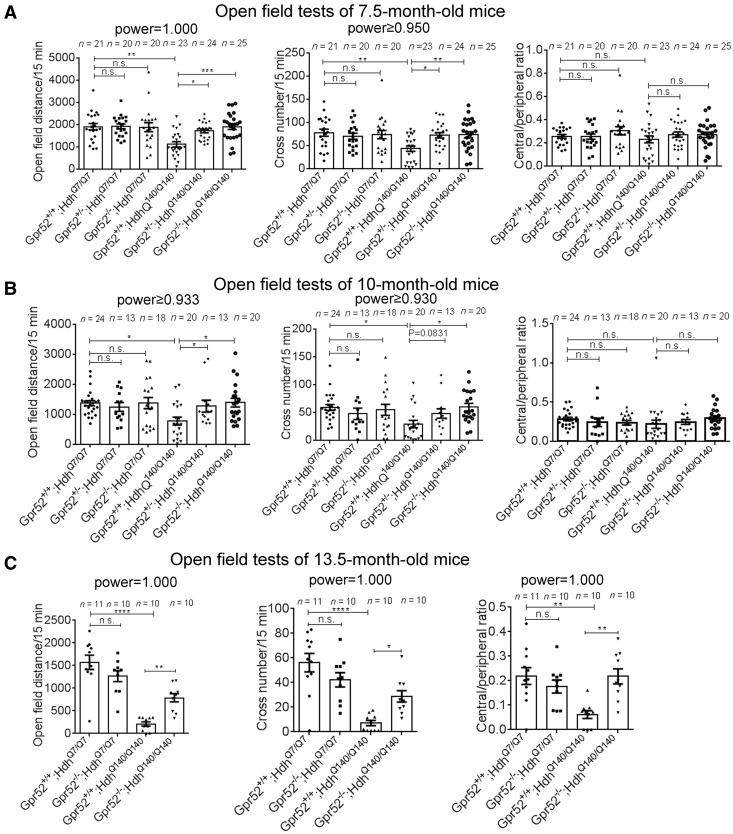Figure 1.
Knockout of Gpr52 rescued Huntington’s disease-associated open-field phenotypes in a knock-in Huntington’s disease mouse model. (A) Travel distances, cross numbers and central/peripheral ratios in the open-field tests of 7.5-month-old mice of the indicated genotypes. Each dot represents an individual mouse, and each corresponding bar represents mean ± standard error of the mean (SEM). The statistical analysis was performed by one-way ANOVA and post hoc Bonferroni’s tests for the indicated comparisons. n.s. = not significant = P > 0.1, *P < 0.05, **P < 0.01, ***P < 0.001, and ****P < 0.0001. P-values between 0.05 and 0.1 are presented by exact values. Huntington’s disease mice showed significant lowering in the travel distance and cross number, which were rescued by Gpr52+/− or Gpr52−/−. (B and C) As in A, but using 10-month-old or 13.5-month-old mice, respectively.

